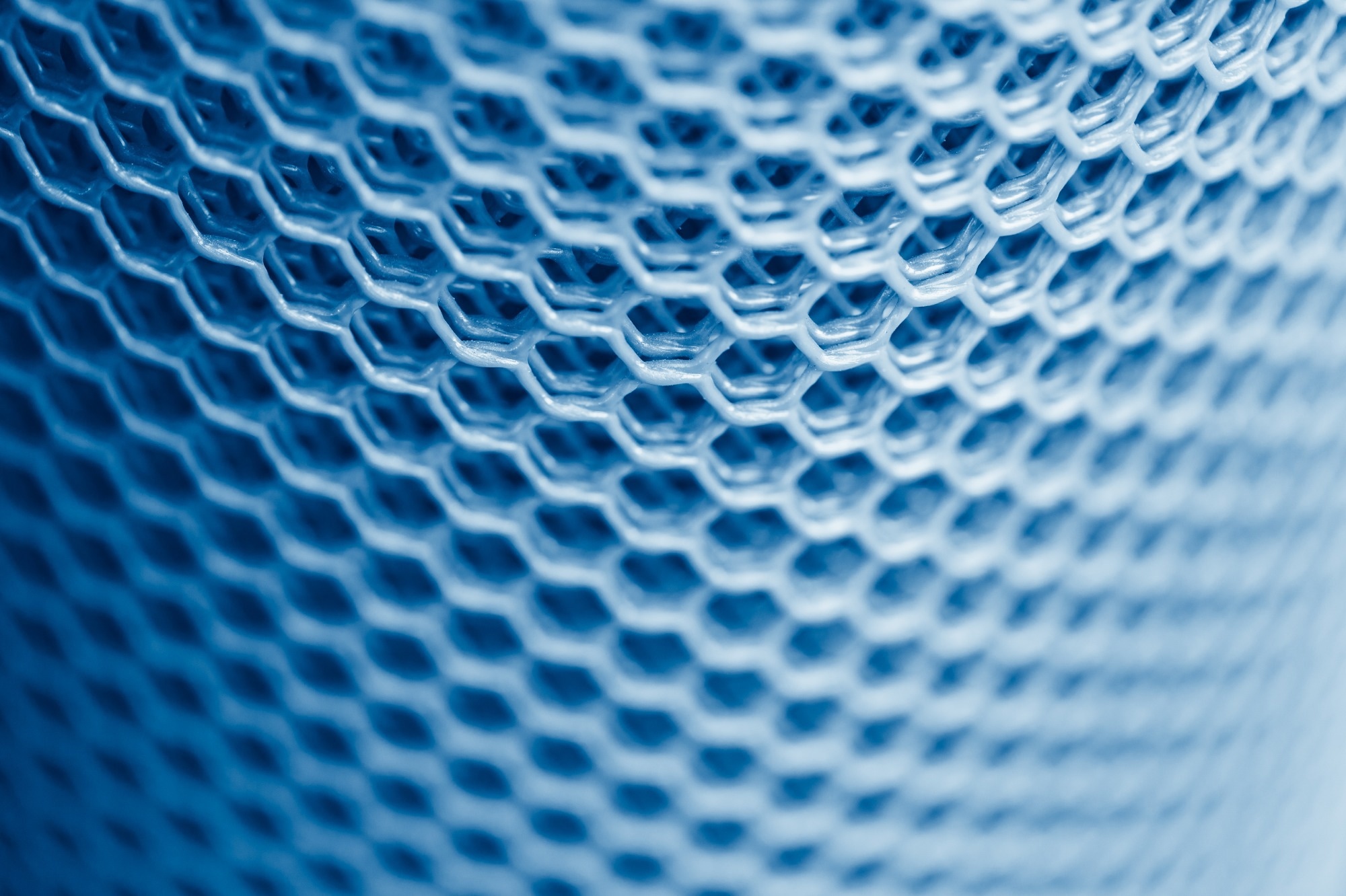A recent article published in Petroleum Science demonstrated the high-temperature stability of water-soluble nanocomposites modified with exfoliated organic montmorillonite (MMT) nanosheets, which were firmly adsorbed on the polymer chains.
 Study: High-temperature resistant polymer nanocomposites with exfoliated organic-modified montmorillonite nanosheets strongly adsorbed on polymer chains. Image Credit: Quality Stock Arts/Shutterstock.com
Study: High-temperature resistant polymer nanocomposites with exfoliated organic-modified montmorillonite nanosheets strongly adsorbed on polymer chains. Image Credit: Quality Stock Arts/Shutterstock.com
Background
Shallow gas and oil fields are gradually depleting, causing an increase in exploration depth and bottom hole temperature. However, the rheological characteristics of WBDFs degrade at high temperatures, leading to wellbore leakage, wall collapse, stuck drilling tools, and other accidents.
Copolymer nanocomposites exhibit high-temperature resistance and can be employed as WBDF additives to enhance their rheological characteristics and filtering capabilities at elevated temperatures.
MMT, a two-dimensional layered silicate, is a ‘universal material’ offering abundant availability, minimal cost, and distinct electronegativity. Exfoliated MMT nanosheets possess excellent length-to-diameter ratio, specific surface area, adsorption properties, and chemical reactivity. These can serve as promising hydrophilic nanocomposites for WBDFs.
Furthermore, copolymerization of various functional polymers can improve the resistance of WBDFs to temperature, salt, and shear compared to conventional homopolymers.
Thus, this study co-polymerized acrylamide (AM), 2-acrylamido-2-methyl-1-propanesulfonic acid (AMPS), and 4-acryloylmorpholine (ACMO) to produce a water-soluble nanocomposite with sodium 1-dodecanesulfonate (SLS)-intercalated MMT (SLS-MMT).
Methods
SLS-MMT was synthesized using Na-MMT and SLS in solution form and was vacuum dried at 70 °C for 24 hours. The resulting sample was crushed and sieved through a 200-mesh screen.
Subsequently, AAA/SLS-MMT nanocomposites were synthesized by in situ free radical polymerization. The final sample was ground and sieved with 200 mesh.
Two compositions, AAA/1.0 wt% SLS-MMT and AAA/2.0 wt% SLS-MMT, were prepared using 0.25 g and 0.50 g of SLS-MMT, respectively. In addition, a reference sample of AAA was synthesized without adding SLS-MMT.
The synthesized materials were characterized by X-ray diffraction (XRD), Fourier-transform Infrared (FTIR) spectroscopy, and nuclear magnetic resonance (NMR) spectroscopy. Additionally, thermogravimetric analysis (TGA) was performed to analyze the weight loss of samples.
The morphology and microstructure of AAA/SLS-MMT nanocomposites and filter cakes were examined by scanning electron microscopy (SEM), transmission electron microscopy (TEM), and X-ray photoelectron spectroscopy (XPS).
Moreover, detailed surface information about the nanocomposites was derived through atomic force microscopy (AFM).
Rheology measurements were performed to determine the composites’ apparent viscosity (AV) at different ageing temperatures and times. Additionally, a stimulated drilling fluid system was prepared using the synthesized nanocomposites, and its stability was examined by a zeta potential analyzer.
Finally, molecular simulations were performed on Materials Studio software to calculate adsorption energy for the exfoliated MMT nanosheet on the polymer.
Results and Discussion
The successful formation of SLS-MMT and AAA/SLS-MMT was verified by XRD, FTIR spectroscopy, and NMR spectroscopy results. SLS-MMT exhibited a greater interlayer distance compared to pure MMT.
However, the AAA/SLS-MMT nanocomposites did not show diffraction peaks, attributed to the expanded interlayer spacing of SLS-MMT due to the heat of polymerization, facilitating its uniform distribution in the polymer matrix.
The SEM images depicted a thin and fragile macromolecular chain of AAA with a smooth surface.
Alternatively, the molecular chains of AAA/1.0 wt% SLS-MMT were thicker and tougher with low porosity of the network structure. Moreover, it had a substantially rougher surface than AAA due to the adsorption of SLS-MMT nanosheets over the polymer chain.
In addition, TEM images depicted the uniform dispersion of exfoliated SLS-MMT nanosheets throughout the polymer matrix.
In TGA analysis, the maximum thermal decomposition rate of AAA, AAA/1.0 wt% SLS-MMT, and AAA/2.0 wt% SLS-MMT were observed at 275, 298, and 280 °C, respectively.
The higher thermal decomposition temperature of AAA/1.0 wt% SLS-MMT implies that the nanosheets on its surface can block the thermal degradation of the polymer chains.
XPS data revealed strong adsorption between exfoliated SLS-MMT nanosheets and AAA matrix. AFM images further validated this adsorption.
In addition, the AV values for AAA, AAA/1.0 wt% SLS-MMT, and AAA/2.0 wt% SLS-MMT were 108.3, 150.0, and 141.7 msPa, respectively. These values exhibited the high-temperature resistance of the nanocomposites.
Moreover, AAA/1.0 wt% SLS-MMT revealed the lowest filtrate volume when used in fresh and saltwater-based drilling fluids. MMT maintained uniformity and stability in WBDF systems even at high temperatures.
Conclusion
Overall, the researchers successfully synthesized AAA/SLS-MMT nanocomposites as high-temperature resistant additives for WBDFs.
The adsorption energy between the polymer chains and exfoliated SLS-MMT nanosheets was calculated to be -13032.06 kcal/mol. This strong adsorption enhances the adsorption of clay particles in drilling fluid at high temperatures.
The efficacy and stability of the synthesized nanocomposites at elevated temperatures were evaluated in deionized water and drilling fluids. The results indicated that AAA/SLS-MMT could reduce fluid loss in WBDFs for ultra-deep and deep wells.
Moreover, ageing and filtration reduction exhibited enhanced resistance of WBDFs to elevated temperatures after adding AAA/1.0 wt% SLS-MMT.
In conclusion, adding high-temperature resistant nanocomposites to WBDFs is a promising strategy for designing fluids for deep and ultra-deep oil and gas drilling.
Journal Reference
Wang, D.-Y., Chen, C.-F., Ju, F., & Ke, Y.-C. (2024). High-temperature resistant polymer nanocomposites with exfoliated organic-modified montmorillonite nanosheets strongly adsorbed on polymer chains. Petroleum Science. doi: 10.1016/j.petsci.2024.07.006. https://www.sciencedirect.com/science/article/pii/S1995822624001900
Disclaimer: The views expressed here are those of the author expressed in their private capacity and do not necessarily represent the views of AZoM.com Limited T/A AZoNetwork the owner and operator of this website. This disclaimer forms part of the Terms and conditions of use of this website.